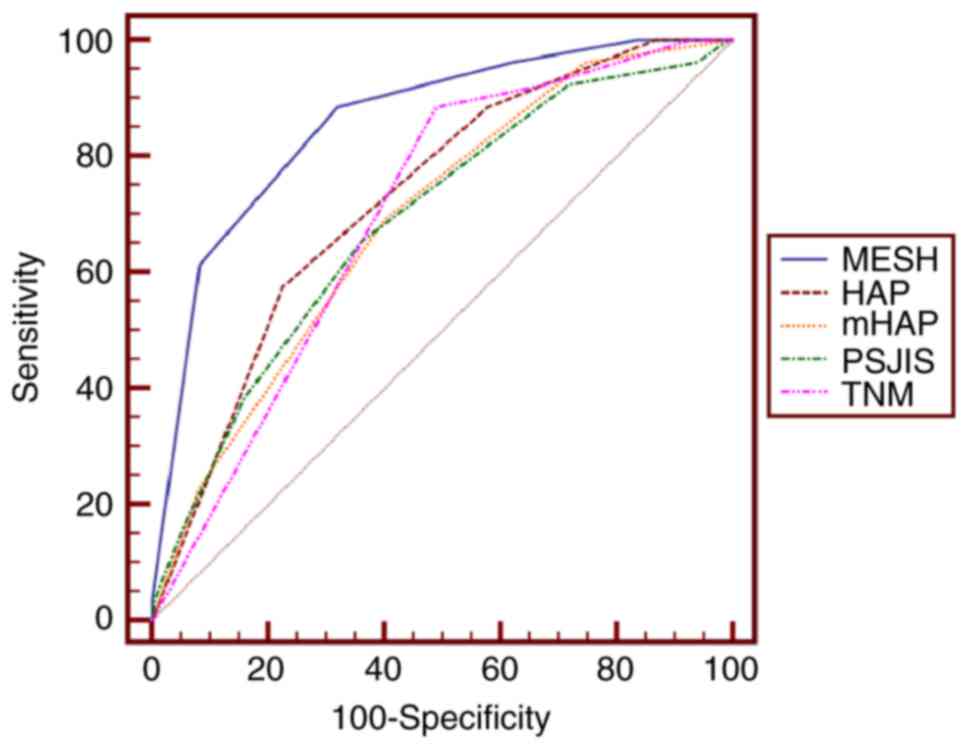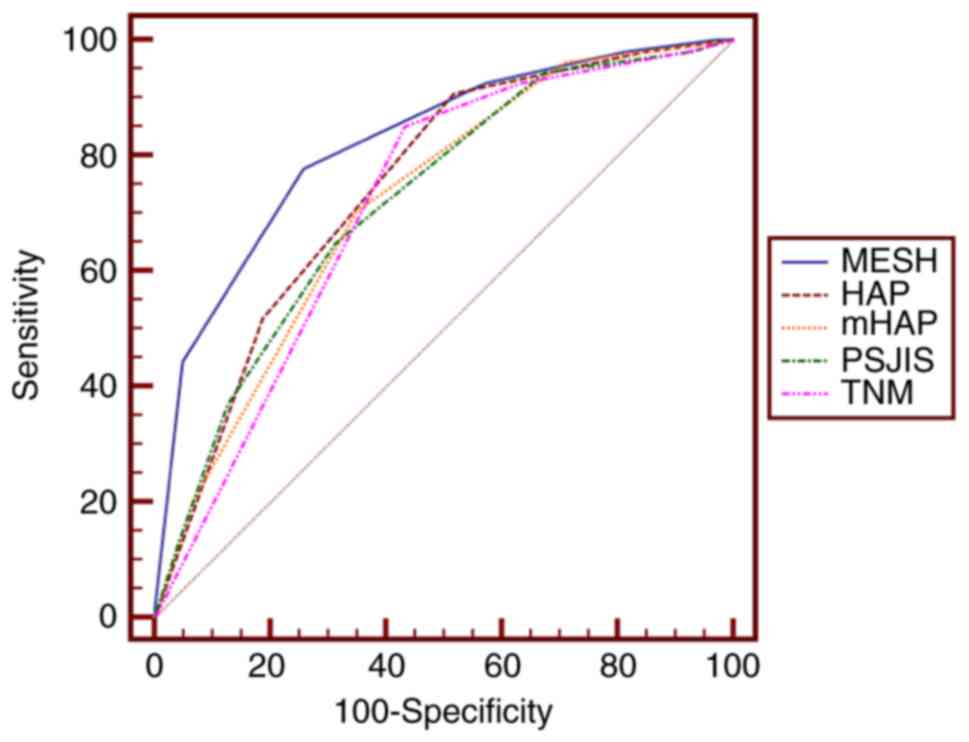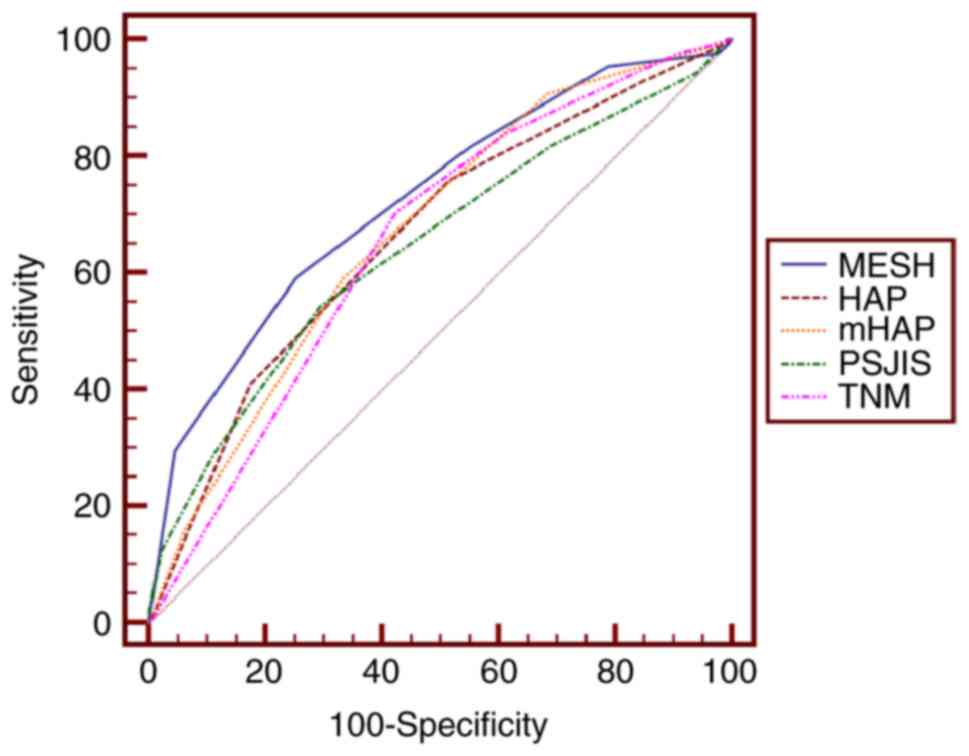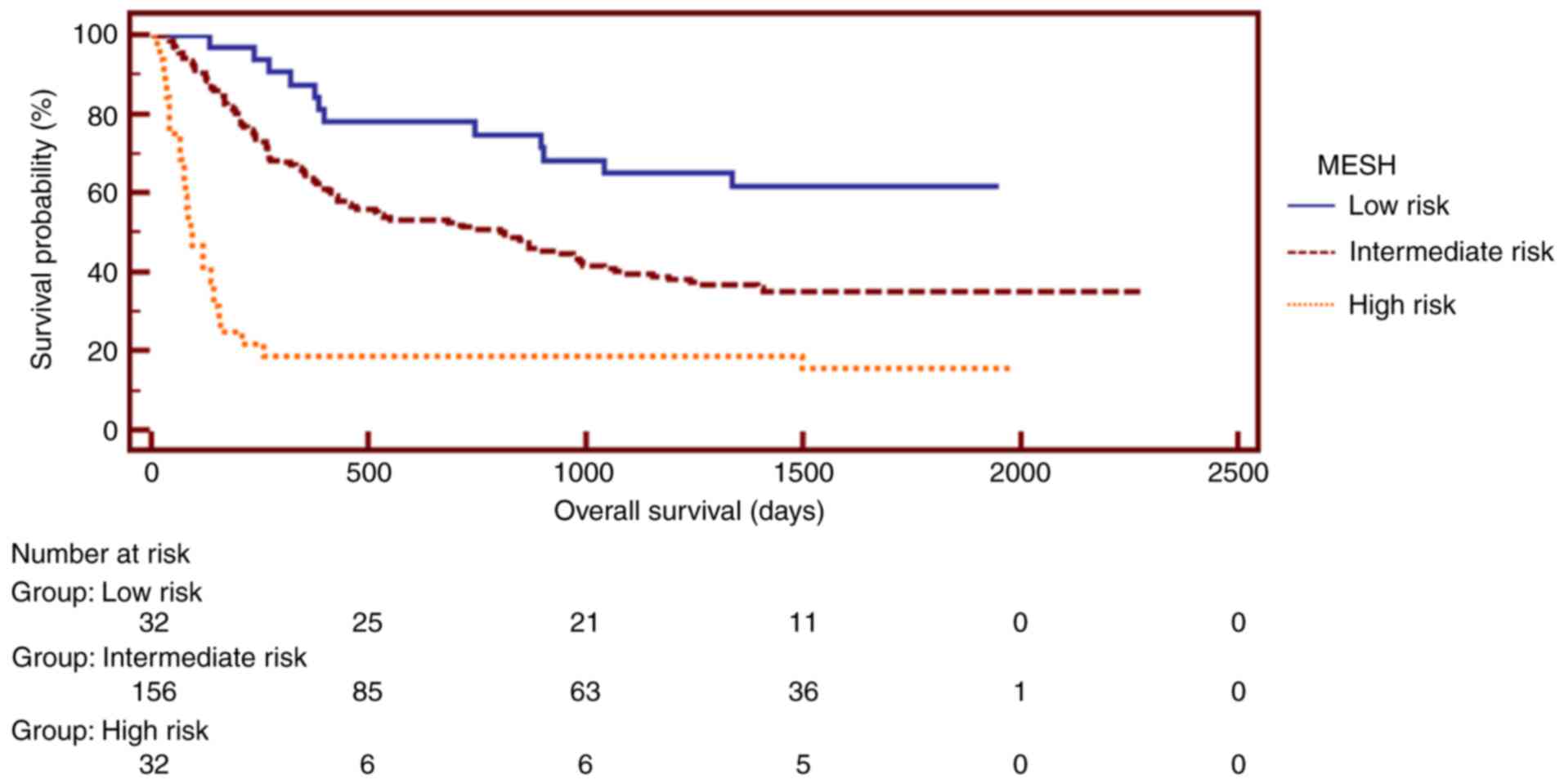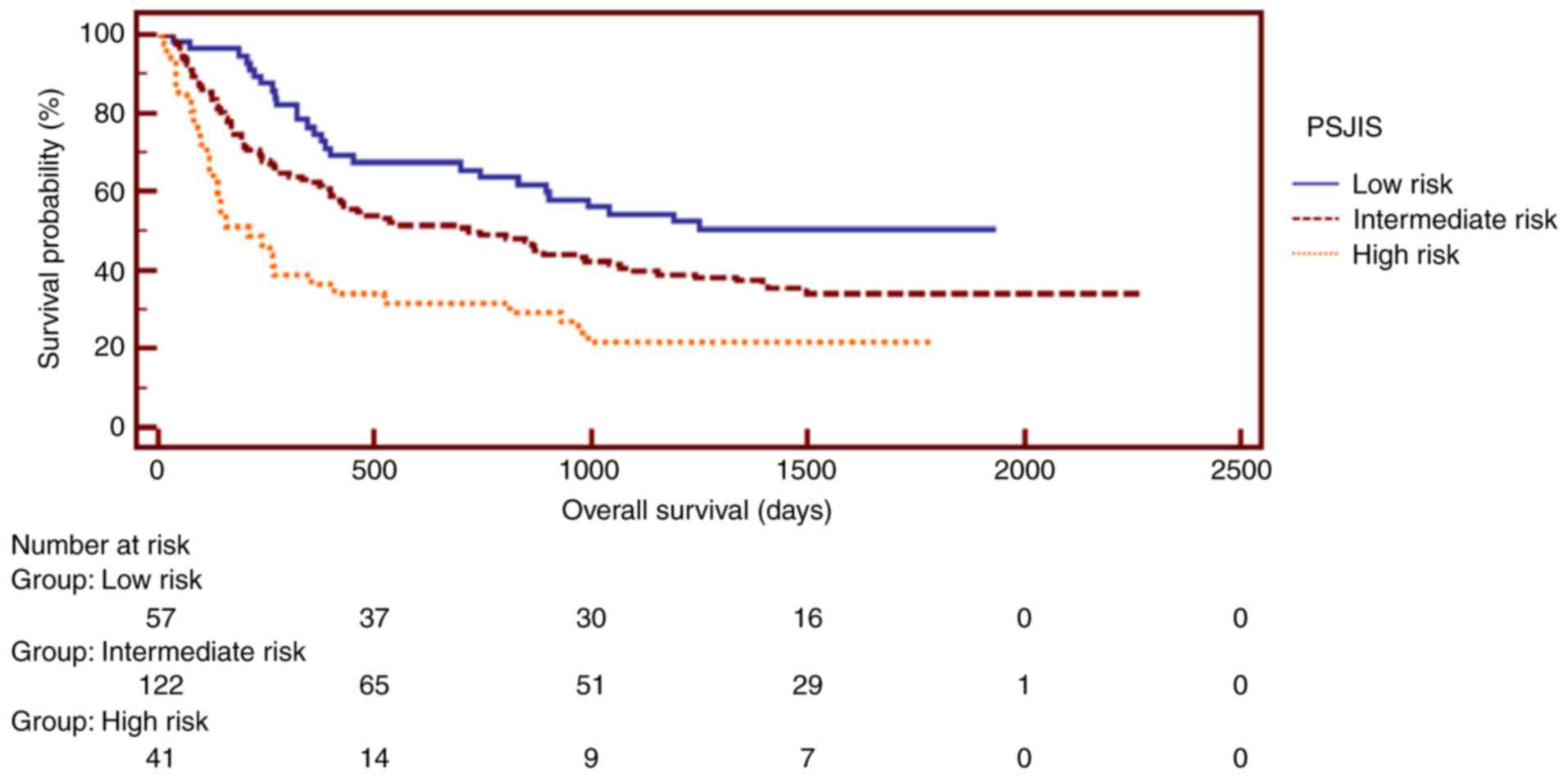|
1
|
Chen W, Zheng R, Baade PD, Zhang S, Zeng
H, Bray F, Jemal A, Yu XQ and He J: Cancer statistics in China,
2015. CA Cancer J Clin. 66:115–132. 2016. View Article : Google Scholar : PubMed/NCBI
|
|
2
|
GBD 2015 mortality and causes of death
collaborators, . Global, regional, and national life expectancy,
all-cause mortality, and cause-specific mortality for 249 causes of
death, 1980–2015: A systematic analysis for the global burden of
disease study 2015. Lancet. 388:1459–1544. 2016. View Article : Google Scholar : PubMed/NCBI
|
|
3
|
Bruix J and Sherman M; Practice Guidelines
Committee, ; American Association for the Study of Liver Diseases,
: Management of hepatocellular carcinoma. Hepatology. 42:1208–1236.
2005. View Article : Google Scholar : PubMed/NCBI
|
|
4
|
European Association For Study Of Liver, ;
European Organization For Research And Treatment Of Cancer, .
EASL-EORTC clinical practice guidelines: Management of
hepatocellular carcinoma. Eur J Cancer. 48:599–641. 2012.
View Article : Google Scholar : PubMed/NCBI
|
|
5
|
Llovet JM, Real MI, Montaña X, Planas R,
Coll S, Aponte J, Ayuso C, Sala M, Muchart J, Solà R, et al:
Arterial embolization or chemoembolization versus symptomatic
treatment in patients with unresectable hepatocellular carcinoma: A
randomized controlled trial. Lancet. 359:1734–1739. 2002.
View Article : Google Scholar : PubMed/NCBI
|
|
6
|
Lo CM, Ngan H, Tso WK, Liu CL, Lam CM,
Poon RT, Fan ST and Wong J: Randomized controlled trial of
transarterial lipiodol chemoembolization for unresectable
hepatocellular carcinoma. Hepatology. 35:1164–1171. 2002.
View Article : Google Scholar : PubMed/NCBI
|
|
7
|
Burrel M, Reig M, Forner A, Barrufet M, de
Lope CR, Tremosini S, Ayuso C, Llovet JM, Real MI and Bruix J:
Survival of patients with hepatocellular carcinoma treated by
transarterial chemoembolization (TACE) using drug eluting beads.
Implications for clinical practice and trial design. J Hepatol.
56:1330–1335. 2012. View Article : Google Scholar : PubMed/NCBI
|
|
8
|
Liu PH, Hsu CY, Hsia CY, Lee YH, Huang YH,
Su CW, Lee FY, Lin HC and Huo TI: Proposal and validation of a new
model to estimate survival for hepatocellular carcinoma patients.
Eur J Cancer. 63:25–33. 2016. View Article : Google Scholar : PubMed/NCBI
|
|
9
|
Nishikawa H, Kita R, Kimura T, Endo M,
Ohara Y, Sakamoto A, Saito S, Nishijima N, Nasu A, Komekado H and
Osaki Y: Proposal of the performance status combined Japan
integrated staging system in hepatocellular carcinoma complicated
with cirrhosis. Int J Oncol. 46:2371–2379. 2015.PubMed/NCBI
|
|
10
|
Raoul JL, Gilabert M and Piana G: How to
define transarterial chemoembolization failure or refractoriness: A
European perspective. Liver Cancer. 3:119–124. 2014. View Article : Google Scholar : PubMed/NCBI
|
|
11
|
Kadalayil L, Benini R, Pallan L, O'Beirne
J, Marelli L, Yu D, Hackshaw A, Fox R, Johnson P, Burroughs AK, et
al: A simple prognostic scoring system for patients receiving
transarterial embolization for hepatocellular cancer. Ann Oncol.
24:2565–2570. 2013. View Article : Google Scholar : PubMed/NCBI
|
|
12
|
Pinato DJ, Arizumi T, Allara E, Jang JW,
Smirne C, Kim YW, Kudo M, Pirisi M and Sharma R: Validation of the
hepatoma arterial embolization prognostic score in european and
asian populations and proposed modification. Clin Gastroenterol
Hepatol. 13:1204–1208. 2015. View Article : Google Scholar : PubMed/NCBI
|
|
13
|
Kubo S, Tanaka H, Shuto T, Takemura S,
Yamamoto T, Uenishi T, Tanaka S, Hai S, Yamamoto S, Ichikawa T, et
al: Prognostic effects of causative virus in hepatocellular
carcinoma according to the Japan integrated staging (JIS) score. J
Gastroenterol. 40:972–979. 2005. View Article : Google Scholar : PubMed/NCBI
|
|
14
|
Yau T, Tang VY, Yao TJ, Fan ST, Lo CM and
Poon RT: Development of Hong Kong liver cancer staging system with
treatment stratification for patients with hepatocellular
carcinoma. Gastroenterology. 146:1691–1700. 2014. View Article : Google Scholar : PubMed/NCBI
|
|
15
|
Hsu CY, Huang YH, Hsia CY, Su CW, Lin HC,
Loong CC, Chiou YY, Chiang JH, Lee PC, Huo TI and Lee SD: A new
prognostic model for hepatocellular carcinoma based on total tumor
volume: The taipei integrated scoring system. J Hepatol.
53:108–117. 2010. View Article : Google Scholar : PubMed/NCBI
|
|
16
|
Bolondi L, Burroughs A, Dufour JF, Galle
PR, Mazzaferro V, Piscaglia F, Raoul JL and Sangro B: Heterogeneity
of patients with intermediate (BCLC B) hepatocellular carcinoma:
Proposal for a subclassification to facilitate treatment decisions.
Semin Liver Dis. 32:348–359. 2012.PubMed/NCBI
|
|
17
|
Li X, Zhong X, Chen ZH, Xing YF, Wu DH,
Chen J, Ma XK, Lin Q, Wen JY, Wei L, et al: Hepatitis B virus DNA
negativity acts as a favorable prognostic factor in hepatocellular
carcinoma patients. Asian Pac J Cancer Prev. 15:9635–9641. 2014.
View Article : Google Scholar : PubMed/NCBI
|
|
18
|
Roderburg C, Tacke F and Trautwein C:
Antiviral therapy in patients with viral hepatitis and
hepatocellular carcinoma: Indications and prognosis. Visc Med.
32:121–126. 2016. View Article : Google Scholar : PubMed/NCBI
|
|
19
|
Yu LH, Li N, Shi J, Guo WX, Wu MC and
Cheng SQ: Does anti-HBV therapy benefit the prognosis of
HBV-related hepatocellular carcinoma following hepatectomy? Ann
Surg Oncol. 21:1010–1015. 2014. View Article : Google Scholar : PubMed/NCBI
|















